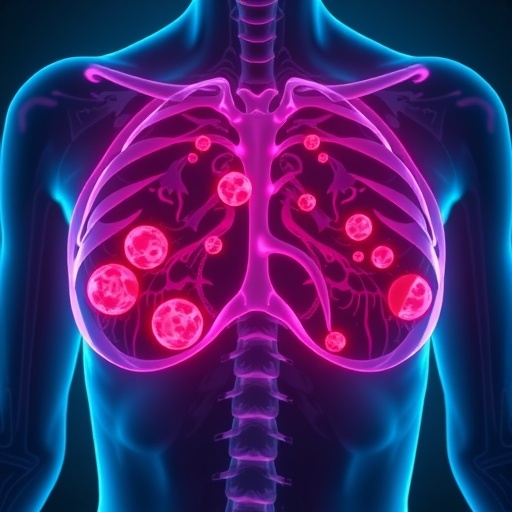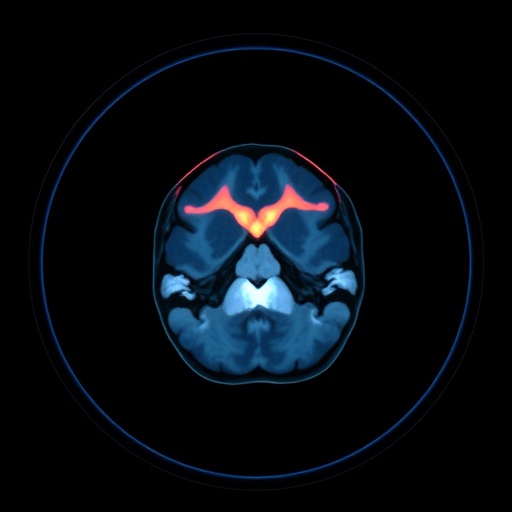In an era where artificial intelligence is revolutionizing medical prognostics, a new study has emerged spotlighting its groundbreaking application in predicting breast cancer recurrence. Published recently in BMC Cancer, this comprehensive retrospective research investigates the use of diverse machine learning and deep learning algorithms to forecast the likelihood of breast cancer recurrence within one year after surgery. By meticulously analyzing structural prognostic data from over a thousand post-operative patients, this study heralds a transformative shift in how oncologists might anticipate disease progression and tailor treatments.
Breast cancer remains one of the most pervasive malignancies affecting women worldwide, with survival rates improving due to advancements in detection and treatment. However, despite these advances, recurrence post-surgery continues to pose a significant challenge. The recurrence not only complicates treatment but also adversely impacts patients’ overall survival and quality of life. Accurately predicting which patients are at elevated risk for relapse is paramount for personalized care, yet traditional prognostic methods often fall short in precision and clinical utility.
This investigation leveraged a sizable dataset comprising 1,156 patients who underwent breast cancer surgery between January 2020 and December 2022 across three major clinical centers in Tehran. To ensure rigor, the study excluded patients who did not undergo surgery or had insufficient follow-up duration, resulting in a robust cohort of 445 relapsed and 711 non-relapsed cases. This selection criterion ensured the reliability of the outcome variables and strengthened the validity of the predictive models developed.
Diving into the methodological framework, the researchers identified 23 key prognostic variables encompassing tumor characteristics, receptor statuses, and patient demographics. These parameters were systematically employed to train various algorithms, including both machine learning and deep learning models – a comprehensive strategy enabling robust comparison. Among the algorithms tested, random forest emerged as the most proficient, outperforming others across every evaluated metric, including sensitivity, specificity, and the oft-cited area under the receiver operating characteristic curve (AUC).
One of the richest contributions of this study is the integration of SHapley Additive exPlanations (SHAP) to interpret model outputs. SHAP enhances transparency in AI by quantifying the impact of each prognostic factor on the recurrence prediction. This interpretability addresses one of the critical barriers to clinical adoption – the “black box” nature of many AI systems. Here, tumor grade, HER-2 status, and lymph node involvement surfaced as the most influential factors, reinforcing known clinical risk markers while bolstering their predictive value through AI algorithms.
The authors emphasize the potential clinical ramifications of these findings. Implementing such an AI-powered predictive tool in oncological practice could revolutionize post-operative management by enabling oncologists to stratify patients based on recurrence risk early on. This capability would empower physicians to personalize follow-up regimens, optimize adjuvant therapy selection, and allocate medical resources more judiciously, ultimately improving patient outcomes while mitigating overtreatment and healthcare costs.
Moreover, the study spotlights the broader context of integrating artificial intelligence in breast cancer prognosis. While prior research hinted at AI’s promise, this large-scale, multi-center retrospective study provides robust empirical evidence supporting its clinical utility. Its meticulous design and comprehensive evaluation metrics set a precedent for future predictive modeling studies, laying a concrete foundation for clinical translation.
From a technical perspective, the use of random forest classifiers is particularly appropriate given their ensemble nature and inherent ability to manage heterogeneous data and complex interactions. By aggregating decisions from multiple decision trees, random forests reduce overfitting risks and enhance generalizability, making them well suited to medical datasets characterized by diverse and sometimes sparse clinical features.
The study also acknowledges limitations inherent in retrospective analyses, such as potential bias from missing data or unmeasured confounders. Nonetheless, by confining the patient selection to clear inclusion and exclusion criteria and employing adjusted correlation-based methods, the researchers maximized the validity and robustness of their findings. Future prospective trials could further corroborate these promising results and expand the applicability of AI-driven prognostic models.
Crucially, this research exemplifies the multidisciplinary convergence of oncology, data science, and clinical informatics. By effectively harnessing computational tools and clinical expertise, the study illuminates a path toward predictive precision medicine—where treatments and interventions are tailored not only to tumor biology but to probabilistic forecasts of disease trajectory constructed through AI.
Furthermore, the study’s utilization of multi-center data contributes to the model’s robustness and generalizability across varying clinical environments. This multi-institutional approach reflects a critical step toward creating AI models that transcend single-center biases and adapt to diverse patient populations, augmenting the feasibility of widespread clinical adoption.
The research also underscores the trajectory of AI in oncological prognostication, wherein future enhancements may integrate dynamic, longitudinal patient data, radiomics, and genomics. Such comprehensive models could yield even more granular predictions, further personalizing oncology care. The present work provides a strong catalyst and methodological template for these advancements.
In summary, this landmark study establishes the random forest algorithm’s superior predictive capacity for one-year breast cancer recurrence post-surgery and elucidates key prognostic determinants through SHAP analysis. Its findings pave the way for integrating AI-driven prognostics into routine clinical workflows, fostering earlier intervention strategies, enhanced survival, and more efficient healthcare delivery models. As breast cancer management continues evolving, harnessing the predictive might of artificial intelligence promises to be a defining frontier.
Subject of Research: Prediction of one-year recurrence in post-operative breast cancer patients using artificial intelligence algorithms.
Article Title: Prediction of one-year recurrence among breast cancer patients undergone surgery using artificial intelligence-based algorithms: a retrospective study on prognostic factors.
Article References:
Nopour, R. Prediction of one-year recurrence among breast cancer patients undergone surgery using artificial intelligence-based algorithms: a retrospective study on prognostic factors. BMC Cancer 25, 940 (2025). https://doi.org/10.1186/s12885-025-14369-5
Image Credits: Scienmag.com
DOI: https://doi.org/10.1186/s12885-025-14369-5
Tags: advancements in breast cancer detectionAI in breast cancer prognosiscancer recurrence risk assessmentclinical applications of artificial intelligencedeep learning algorithms for cancermachine learning in oncologypatient survival and quality of lifepersonalized cancer treatment strategiespost-surgery breast cancer outcomespredicting breast cancer recurrenceretrospective study on breast cancertransformative oncology research





